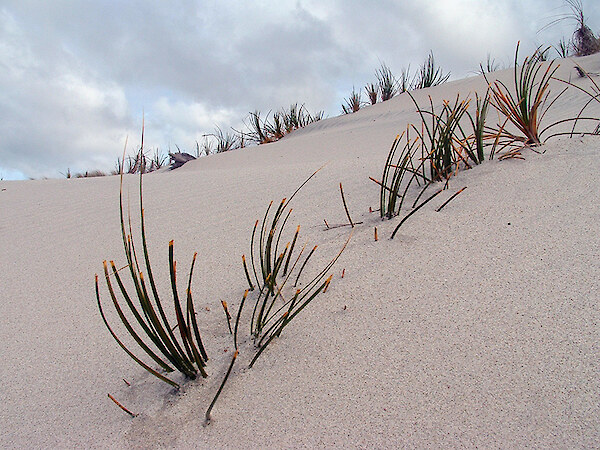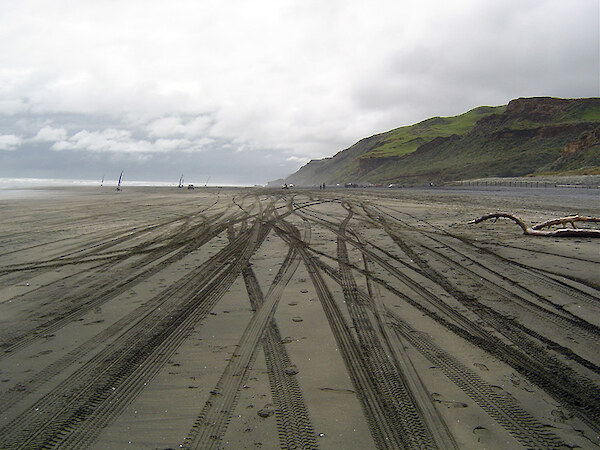 Rabbits can destroy pīngao and other important dune species. Photo: JB Photography
Rabbits can destroy pīngao and other important dune species. Photo: JB Photography Vehicles can damage plants and habitat for species like dotterels and toheroa. Photo: Auckland CouncilSand dune ecosystems occupy about 1100 km of the New Zealand coastline. With 90% of New Zealanders living within 50 km of the coast, beaches play an important role in our lives. However, the way we have chosen to live, work and play on the coast has often bought us into conflict with natural coastal processes and as a result our sand dunes are one of our most highly modified and degraded ecosystems.
Vehicles can damage plants and habitat for species like dotterels and toheroa. Photo: Auckland CouncilSand dune ecosystems occupy about 1100 km of the New Zealand coastline. With 90% of New Zealanders living within 50 km of the coast, beaches play an important role in our lives. However, the way we have chosen to live, work and play on the coast has often bought us into conflict with natural coastal processes and as a result our sand dunes are one of our most highly modified and degraded ecosystems.
Today, dune ecosystems remain under pressure from development, weeds and animal pests, and usage such as vehicles and people destroying sand binding plants.
To ensure we can enjoy our sand dune ecosystems in the future and all the benefits they provide - we need to understand them and look after them.
Check out this video about why our dunes and native dune plants are important. The video project was sponsored by Quinovic Property Management and developed in partnership with Greater Wellington Regional Council and the Waitohu Stream Care Group.
